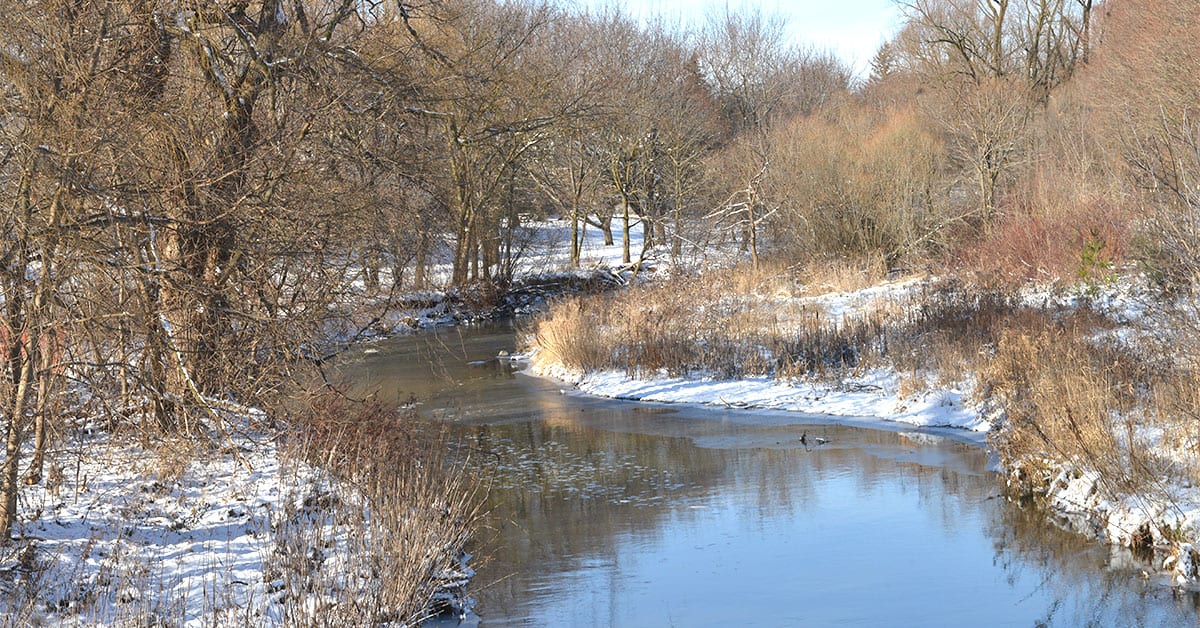Looking at the top 10 weather stories from the past year showcases climate change in Canada, extreme weather events indicated Canadians need to be prepared for these dangers ahead of time. A senior climatologist with Environment Canada, David Phillips has been presenting the top ten weather events of the year for the country for a quarter-century, noting he has never quite seen a year like this one.
“I’ve been presenting the top 10 weather stories for Environment Canada for 26 years and I have to admit that this year was something extraordinary. I remember in the late 1990s and early part of this century, stories like ‘Slow Spring effects Retail Sales’ or a ‘Perfect Harvest Weather’ – nothing as tame as that occurs anymore. For Canada it was another destructive, expensive, and impactful year.”
The criteria Phillips uses to pick the top ten weather events in Canada from the past year depend on the impact on Canadians, the extent of the area effected, whether or not the weather event has occurred previously, how many times it has happened before if applicable, the economic costs and effects from the event, the damage it caused, as well as the longevity of the weather event.
“It was a year of years for weather in Canada, the wildest I’ve ever seen. BC’s terrible weather occupied the first five positions of this year’s list, and seven of the 10 were of British Columbia. It was ground zero.”
The list starts with the notable, recent events of British Columbia with the record heat under the dome coming in at number one, mainly due to the high number of fatalities it caused. A village in BC set a new Canadian record for high temperature at 49.6 degrees Celsius in June, which was close to 24 degrees higher than normal. Almost 600 people died prematurely, almost half of those were in just two days. The heat also contributed to the second on the list, which was BC’s Flood of Floods.
The third weather event on the list was the dry weather experienced coast to coast, that was difficult on farmers. The lack of summer rains in the west caused some of the wildfires, many historians compared it the 1930s.
“The number-three story this year is ‘Canada Dry coast to coast.’ What was extraordinary about the drought in Canada this year was that it was so widespread, so intensely dry and so long last. The seeds of this were sewn long before the season it occurred in. In Winnipeg, for example, it was the driest two years, back-to-back in their history and weather records go back to the 1880s. From British Columbia to northwestern Ontario, it was one of the driest summers in 75 years, not a drop of rain in some places,” noted Phillips.“We also found that more than 40 per cent of the days were hot days above 30. The impact on the food producing sector was devastating – it cost the economy billions of dollars and the price of food has gone up because of the drought and farmers in some cases lost everything.”
Four, five and six were also heavy burdens on Canada’s economy and environment. In fourth spot, they listed the wildfire season that was felt coast to coast. Across Canada, there were 2,500 more fires than in 2020. BC saw the worst of the flames, as 90 per cent of the town of Lytton was destroyed, along with two fatalities. The fires were fast and aggressive, it prompted 50,000 evacuations and a province-wide state of emergency.
Fire crews were brought on board to help from across Canada, Mexico and the Canadian military was sent in, totaling 5,300 wildfire firefighters.
Ranked fifth was Canada’s continuous heat waves: 2021 ranked as the fifth warmest season in the past 74 years. From the start of May through the end of August, heat waves warmed up Canadian streets far past normal summer temperatures. The fourth heat wave was felt nationally, and lasted for two to three weeks.
At number six on the list was the ‘Year of the F2 Tornado.’ Quebec experienced an F2 Tornado at the end of June that took the life of a man seeking refuge, the first tornado fatality in Quebec to happen in the last 27 years. On July 15, with very little warning, an F2 tornado touched down near Barrie. Eyewitnesses report no prior rain or thunderstorm happened beforehand, giving them little time to seek shelter.
“F2 tornadoes, they don’t always occur in Canada. They’re pretty powerful, anywhere from 178 to 220 kilometres an hour, and we had several in Canada. The big event was the destructive and powerful tornado that hit Barrie, Ontario. What was surprising about the storm was there was no nature warning to it. Often in a tornado, some winds come up and thunder and lightning and a green, pinky, black sky – so you just know something is going to happen, but it was like a sneak attack,” said Phillips about the tornado that hit his hometown. “It wasn’t the only F2 tornado that day, there was a family of seven of them that hit parts of Ontario.”
Seventh on the list was the arctic blast that froze Canada in February. Last winter was mild for Canada until February came and brought a rough blast from Siberia. At the same time, a high-pressure system over Greenland was growing fast and drawing mild air up along the Atlantic coast. This created temperatures of 20 degrees below normal in Alberta and Saskatchewan. The centre of the blast hovered over the Prairies for two weeks while wrapping itself around the country. On Valentine’s Day weekend, every bit of the country was frozen while the Prairies were under extreme cold warnings.
Taking the eighth spot on Environment Canada’s top 10 weather events of the year was Calgary’s hail. For the second year in a row, Calgary hailstorms made it onto the list due the amount of damage they caused; storm losses on July 2 accounted for 39,000 insurance claims that exceed $555 million. Calgary has earned itself a reputation for being the hailstorm capital of the world.
Ninth was titled, ‘Hurricane Larry belongs to Newfoundland.’ Both 2020 and 2021 had record active hurricane seasons, 30 last year and 21 this year. Hurricane Larry developed off the coast of West Africa and made history as the longest-living major hurricane in the Atlantic basin. At the beginning of September, Larry entered Canada as a category 2 hurricane with winds sustaining 155 kilometres an hour.
Coming in at number 10 was January’s prairie clipper. The back end of an atmospheric river from the Pacific Ocean turned into an intense weather event for Alberta and across the western Prairies. High speed winds took away anything off the ground it could. The rain and freezing rain quickly tuned into blowing snow creating slick conditions on top of high-speed winds, many highways reported zero visibility during the blizzard. The storm resulted in $155 million in insurance claims, with most of the losses reported in Saskatchewan.
“The year began as it ended with an atmospheric river. The storm featured powerful winds, there were 75 stations in Alberta and Saskatchewan that had winds above 100 kilometres an hour and many of those stations reported all-time high gusts. It created slick highways and stranded vehicles on closed roads, capsized semi-trailers. About 500,000 westerners lost power during that particular storm,” said Phillips.
Although Phillips doesn’t hold a magic crystal ball to predict what next year’s weather will be like for Canada, he suggests major weather events such as what happened in the past year will continue. He noted these are examples of climate change in Canada.
“I think the evidence is becoming clear – and this year it’s a lot more clear – we’re experiencing more frequent and intense extremes and this is leading to more disaster, not only at home but around the world. Thousands of Canadians began seeing climate change as a clear and present danger. Before, it was something scientists have been warning about for years and now it came to pass, I think, for many Canadians,” said Phillips.
He noted many extreme weather events were followed by others in the next season because of the what the heat, drought and fires can do to prime land for when intense rain hits, which causes flooding.
“Before this year very few Canadians experienced temperature of 40 degrees. The insane heat left millions overheated, melted asphalt, buckled highways, fruit baked on trees and tragically the hottest week was the deadliest in Canadian history. In the end, scientists concluded unequivocally that this blistering heat would have been virtually impossible without climate warmth.”
Phillips noted that many parts of Canada will experience different weather events, no part of Canada will be immune to these dangers.
“I think it’s going to be everyone’s issue to deal with. I’m optimistic I think we can do something about it – through cutting back on our fossil fuels but also adapting, recognizing the fact that nature has changed and we have to change to. We know the future is going to be warmer, that’s the safest forecast of all and warm weather does create wild extremes,” reported Phillips.
“What we saw in 2021 has become impossible to ignore and forget, I think hopefully it might be the turning point and confirmation for a lot of Canadians that there is clear and present link between climate change and extreme weather. It’s not so subtle anymore.”









